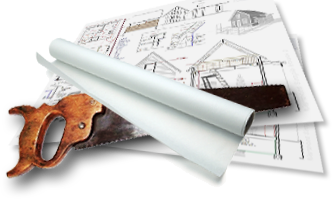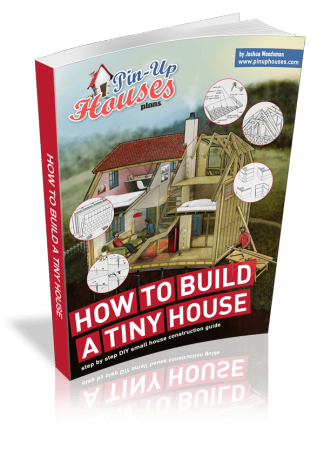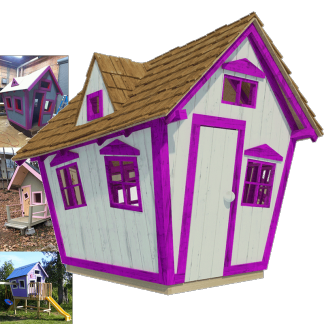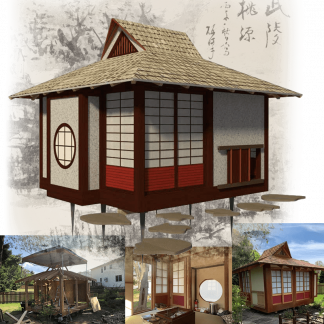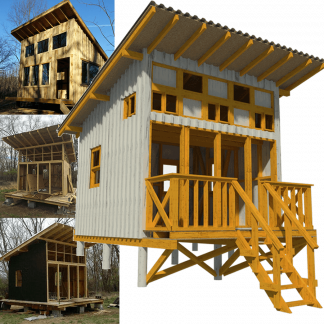
The rising popularity of tiny homes represents a significant shift in contemporary living preferences, driven by a combination of economic, environmental, and lifestyle factors. These compact dwellings, typically ranging from 100 to 400 square feet, offer a minimalist approach to housing that appeals to a growing number of people seeking simplicity, affordability, and sustainability.
Economic Benefits
Nashville home improvement contractors tell us that one of the primary drivers behind the tiny home movement is the economic benefit. Traditional housing costs have skyrocketed in many parts of the world, making homeownership increasingly unattainable for many individuals and families. Tiny homes, by contrast, are far more affordable both in terms of initial construction or purchase costs and ongoing expenses. With lower utility bills, reduced maintenance costs, and minimal property taxes, tiny homes offer a financially sustainable alternative to conventional housing. This affordability allows people to achieve homeownership without the burden of a large mortgage, freeing up resources for other life pursuits.
Environmental Sustainability
Environmental concerns are another significant factor contributing to the popularity of tiny homes. These small dwellings have a much smaller ecological footprint compared to traditional houses. They require fewer building materials, generate less waste, and consume less energy for heating, cooling, and lighting. Many tiny homes are designed with sustainability in mind, incorporating features such as solar panels, rainwater harvesting systems, and composting toilets. This eco-friendly approach appeals to individuals who are conscious of their environmental impact and wish to live more sustainably.
Simplified Living
The tiny home movement also resonates with those seeking a simpler, more intentional way of life. In a world increasingly cluttered with material possessions and digital distractions, tiny homes offer a return to basics. The limited space necessitates a decluttered lifestyle, encouraging residents to prioritize what truly matters. This minimalist approach can lead to reduced stress, greater mental clarity, and a stronger focus on personal relationships and experiences. The simplicity of tiny home living allows people to spend less time on home maintenance and more time on activities they enjoy.
Flexibility and Mobility
Tiny homes also offer unparalleled flexibility and mobility. Many are built on trailers, making them easily transportable. This mobility appeals to those who crave adventure and the freedom to move without the constraints of traditional homeownership. Whether it’s relocating for a job, pursuing a nomadic lifestyle, or simply exploring new places, tiny homes provide the versatility to adapt to changing circumstances. Additionally, their small size makes them suitable for a variety of settings, from urban backyards to rural retreats.
Community and Connection
The tiny home movement has fostered a sense of community and connection among its enthusiasts. Tiny home villages and communities have sprung up around the world, providing like-minded individuals with opportunities to share resources, ideas, and support. These communities often emphasize collaborative living and mutual aid, fostering strong social bonds and a sense of belonging. For many, the appeal of tiny home living extends beyond the physical space to the connections and relationships it facilitates.
Creative and Customizable Design
Despite their small size, tiny homes offer a high degree of customization and creativity in design. Homeowners can tailor their tiny homes to reflect their personal tastes and needs, often incorporating multifunctional furniture, innovative storage solutions, and unique architectural features. The design process allows for a high level of personalization, making each tiny home a unique expression of its owner’s lifestyle and values.
Designing the roof for a tiny home is a critical aspect of its overall construction, given the unique challenges and requirements these compact dwellings present. The roof must be meticulously planned to ensure durability, weather resistance, and efficient space utilization, all while maintaining the aesthetic appeal and structural integrity of the home.
Structural Integrity and Durability
The roof of a tiny home must be robust enough to withstand various weather conditions, including heavy rain, snow, and high winds. Given the small size and often mobile nature of tiny homes, the roof must be lightweight yet strong. Materials like metal roofing, which is both durable and lightweight, are commonly used. Proper framing and support are essential to ensure the roof can handle the weight of any additional elements, such as solar panels.
Weather Resistance
Weather resistance is paramount for tiny homes, especially those on wheels that may travel through different climates. A well-designed roof should include proper insulation and waterproofing to prevent leaks and maintain a comfortable interior temperature. Overhangs and gutters can help direct water away from the home, protecting the walls and foundation from moisture damage. Adequate ventilation is also crucial to prevent condensation and mold growth.
Space Utilization
Space is at a premium in tiny homes, so the roof design often incorporates multi-functional elements. For instance, a sloped roof can provide additional loft space for sleeping or storage. Skylights and dormer windows can be integrated into the roof to bring in natural light, making the small interior feel more spacious and airy. These features not only enhance the functionality of the tiny home but also improve the quality of life for its occupants.
Aesthetic Appeal and Customization
The roof significantly contributes to the overall aesthetic of the tiny home. Whether opting for a traditional gable roof, a modern flat roof, or a more complex design like a butterfly roof, the choice impacts the home’s visual appeal and character. Customization options allow homeowners to align the roof design with their personal style and the architectural theme of the tiny home.
Conclusion
The rising popularity of tiny homes is a testament to the changing priorities and values of modern society. As people seek more affordable, sustainable, and meaningful ways of living, tiny homes offer a compelling alternative to traditional housing. With their economic benefits, environmental sustainability, simplified lifestyle, flexibility, community focus, and customizable design, tiny homes are capturing the imagination and hearts of a diverse and growing population. Whether as a primary residence, vacation home, or downsizing option, tiny homes represent a significant and enduring trend in the housing market.

